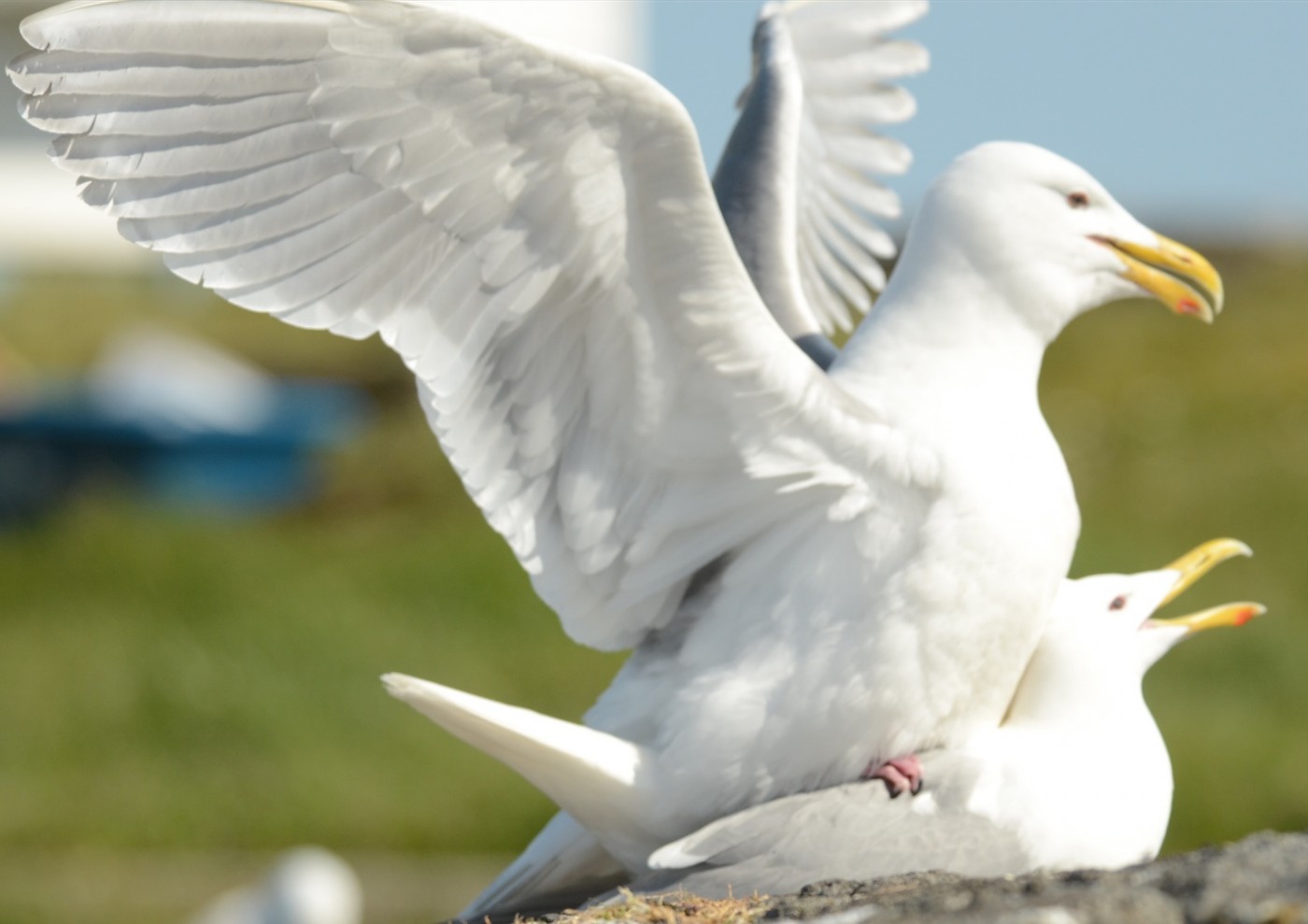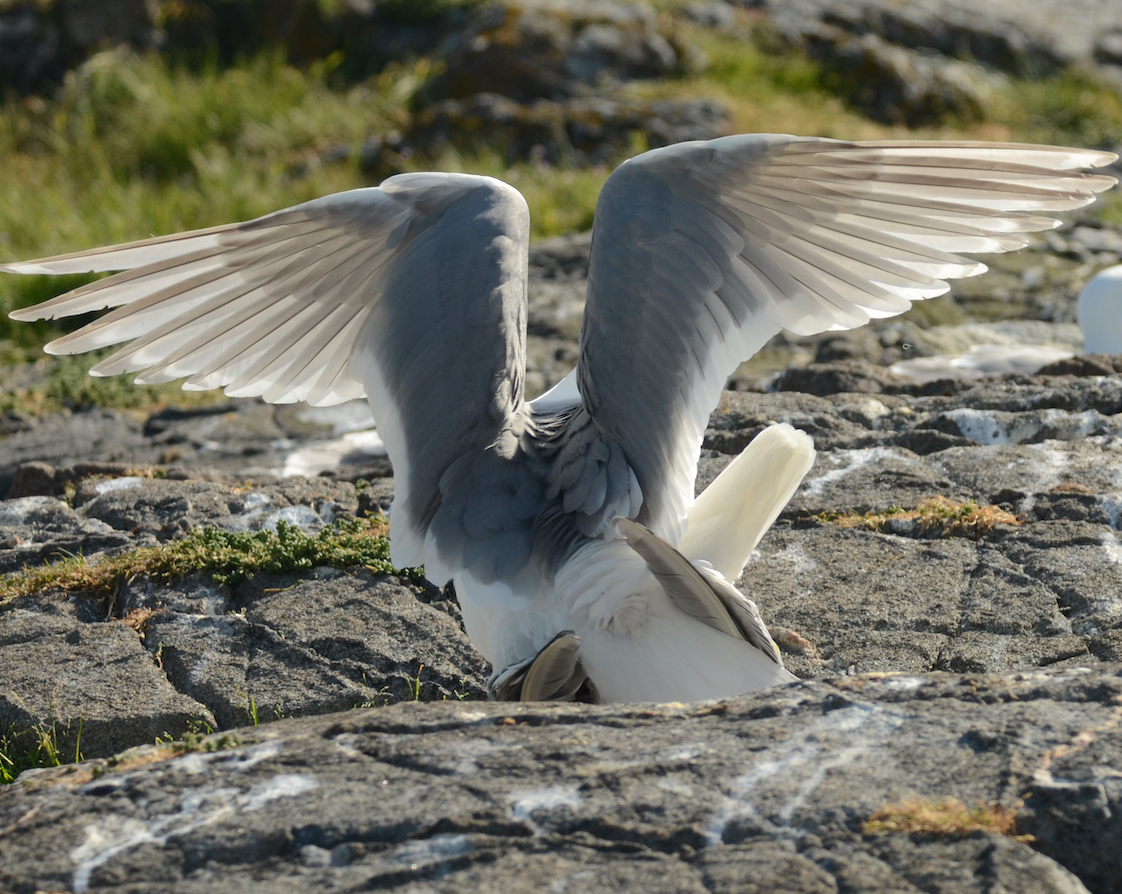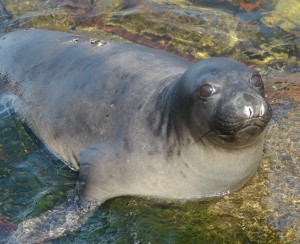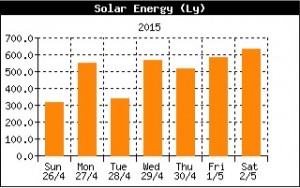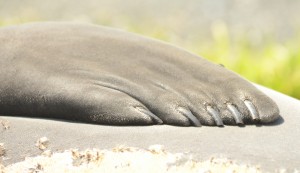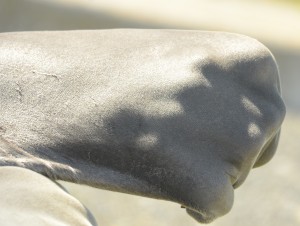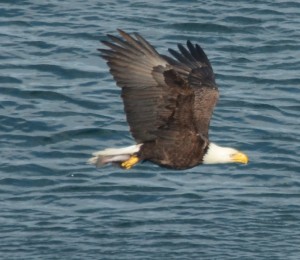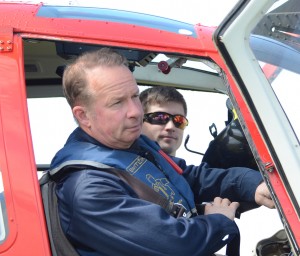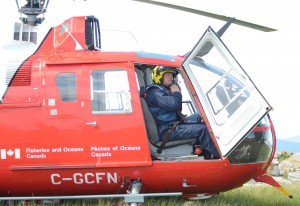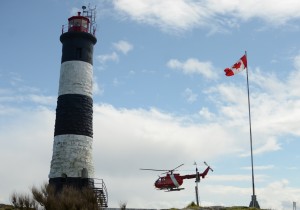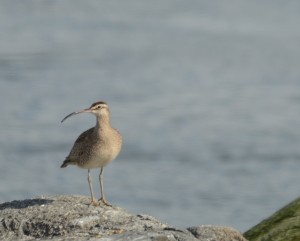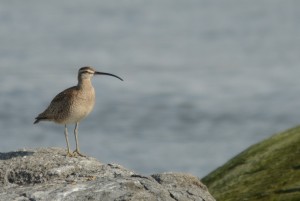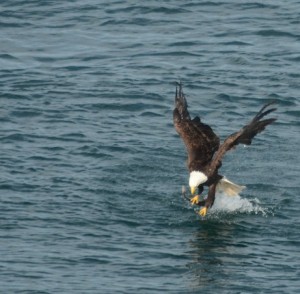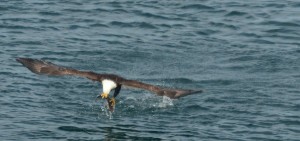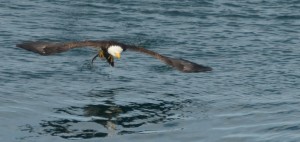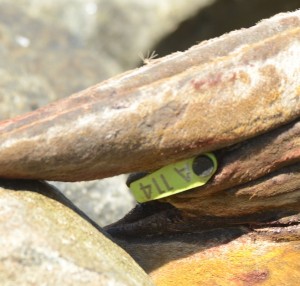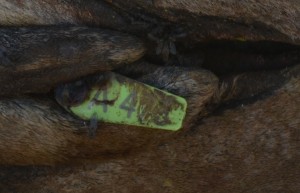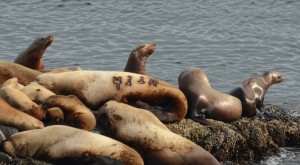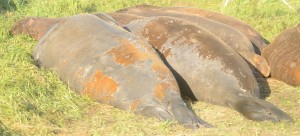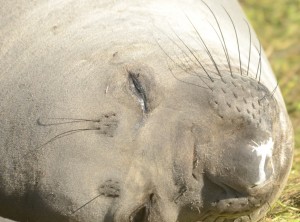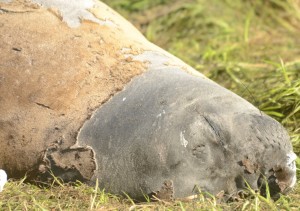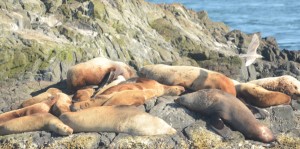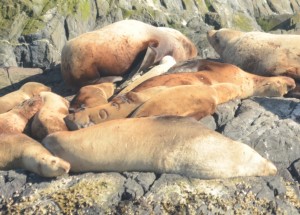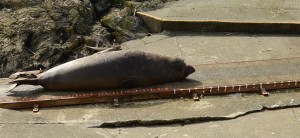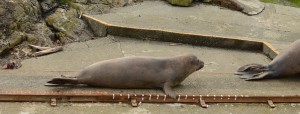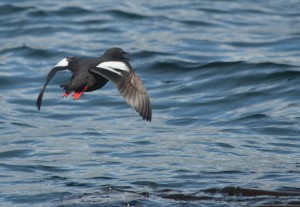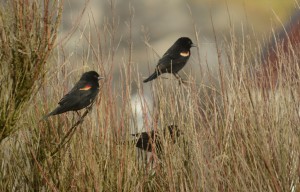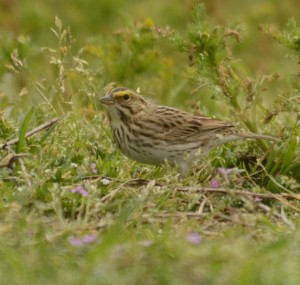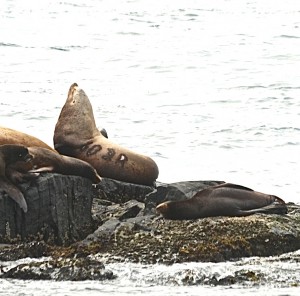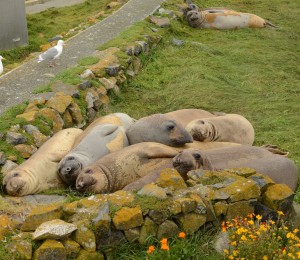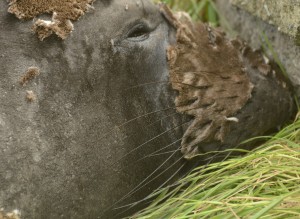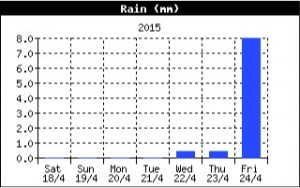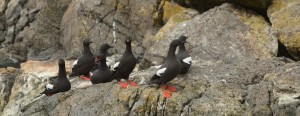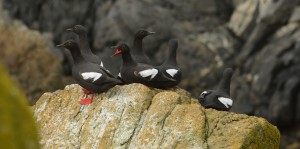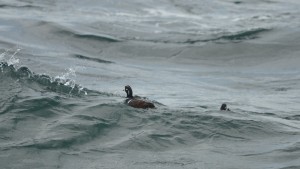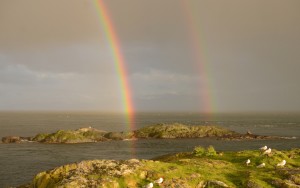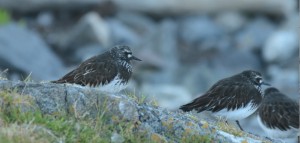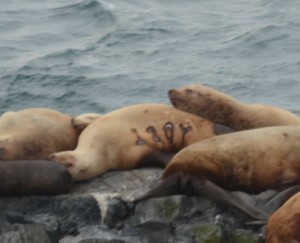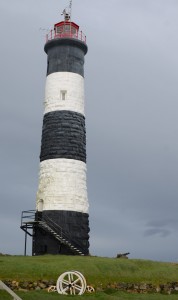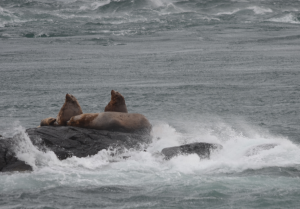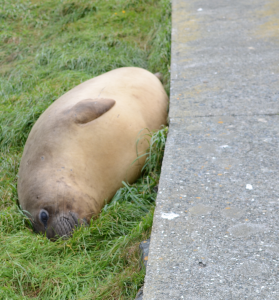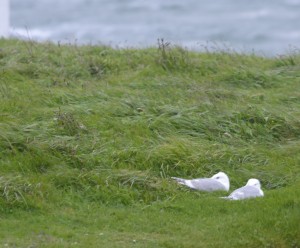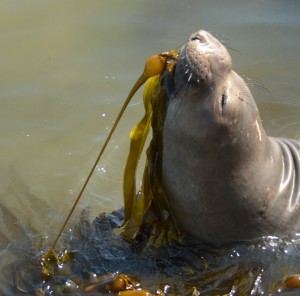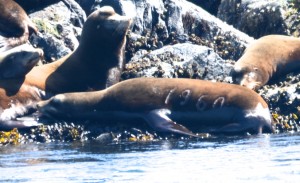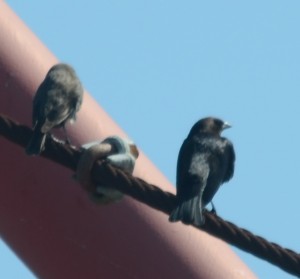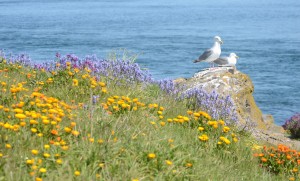The wind was just a zephyr today, with a weightless push from south, then southwest, and then nothing for a while. Not much to sail with and the flag hung lifelessly. The barometric pressure was similarly lethargic, going up ever so slightly, then down by about the same. The strong wind warning continues, so it may get here by Sunday evening and the forecast is for sunshine.
There were no whale-watching boats in the Ecological Reserve today although a sports fishing boat came by to look at the sealions in the evening. One rental boat from Pedder Bay with three men, insisted on fishing for and catching rockfish in the closed Rockfish Conservation Area, while the regulars were well outside. There needs to be more notification and communication about where the conservation area is located.
The bull kelp has reached the surface at low tides and is forming fairly massive beds around Turbine Rock where the Sea Otter likes to hang-out. In by the jetty where the current is less active it is at the surface all the time now and some of it is very reproductive, with large sori patches visible on the fronds.
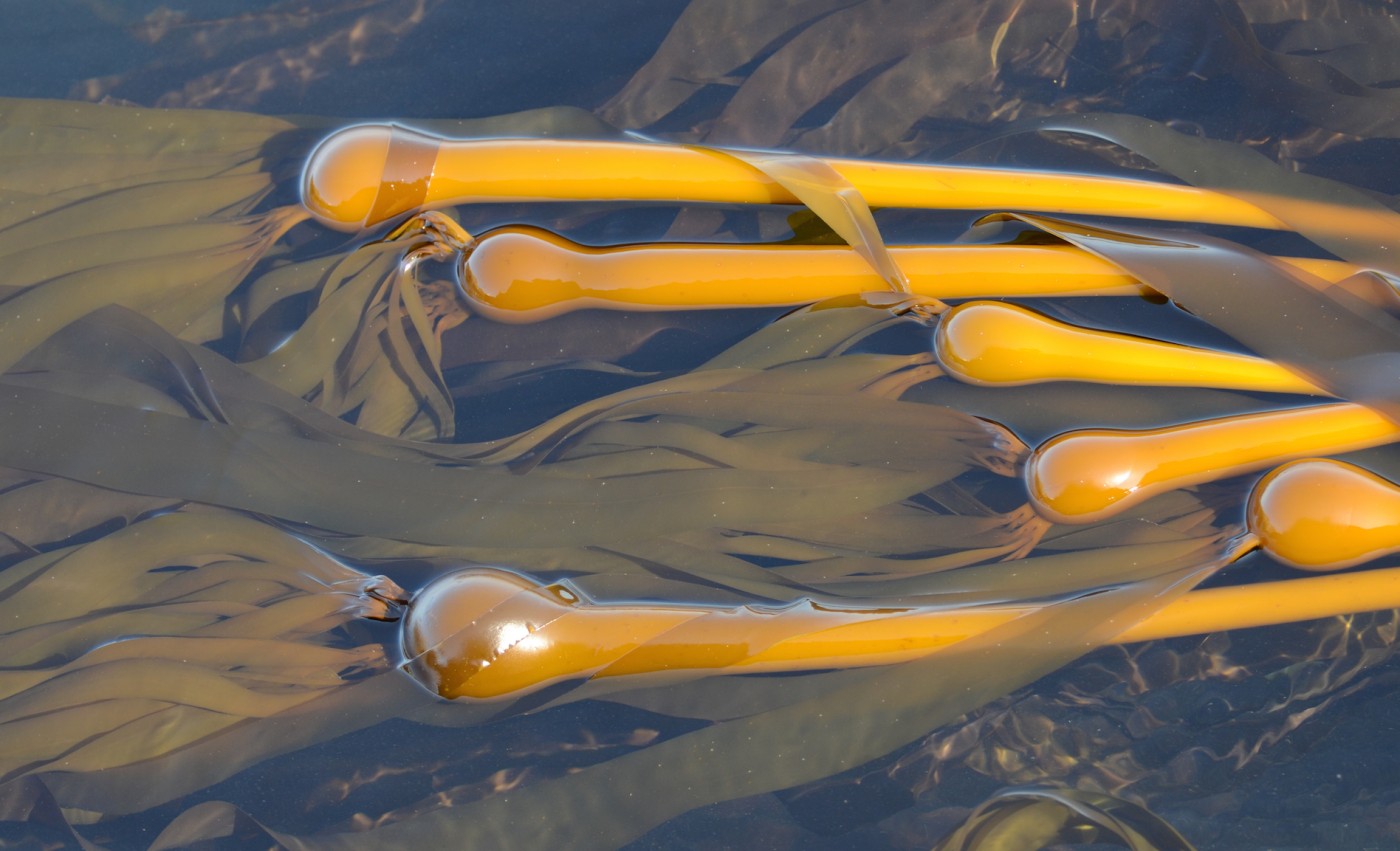
Bull kelp fixes carbon faster than just about anything and grows so fast it makes bamboo look like it is standing still.
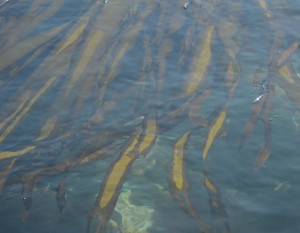
You can easily see where reduction division (meiosis) happens in the lighter yellow spore patches. You can also see where early patches have popped out of the frond and drifted off.
The pair of geese nesting at the base of the light-tower were out walking their goslings today. It looks like five out their eight eggs successfully hatched. The gander belonging to another, younger pair gave himself a real scare today, walking past the basement door where he could see his own reflection. That was really troubling to the pair and also very noisy. The gulls are also noisily going about their business.
The elephant seals continue to moult although a few of them are down to just a few eyebrow hairs now. The younger males seem to be the last to moult and the most active. The same 12 to 14 individuals continue to frequent Great Race.
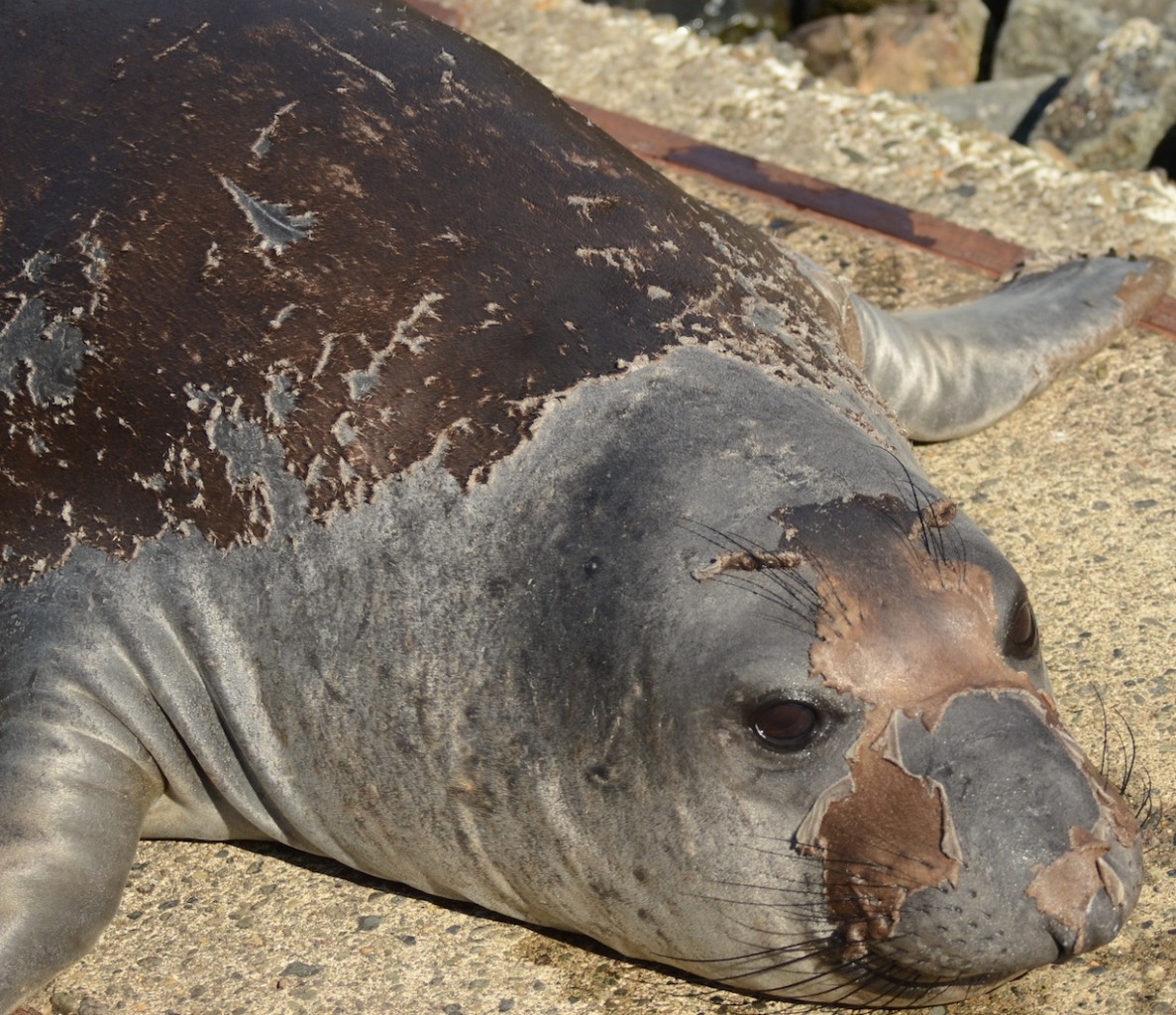
This almost three year old male (#5850) continues to spend day and night on Great Race. He has finally started to moult.
California Sealions were hauled out on Great Race today for the first time since I arrived in March and there was a male Californian (sealion) on the jetty that didn’t want to leave when I went down to sample seawater in the afternoon.
The solar panels were well supplied with sunlight today and produced enough energy to run the de-salinator and top up fresh water supply. The high value was 900 W/m2 and the cumulative amount for the day, at 7:00 PM broke the week’s record.
There were no visitors today and maintenance included routine chores and a couple of little projects.
